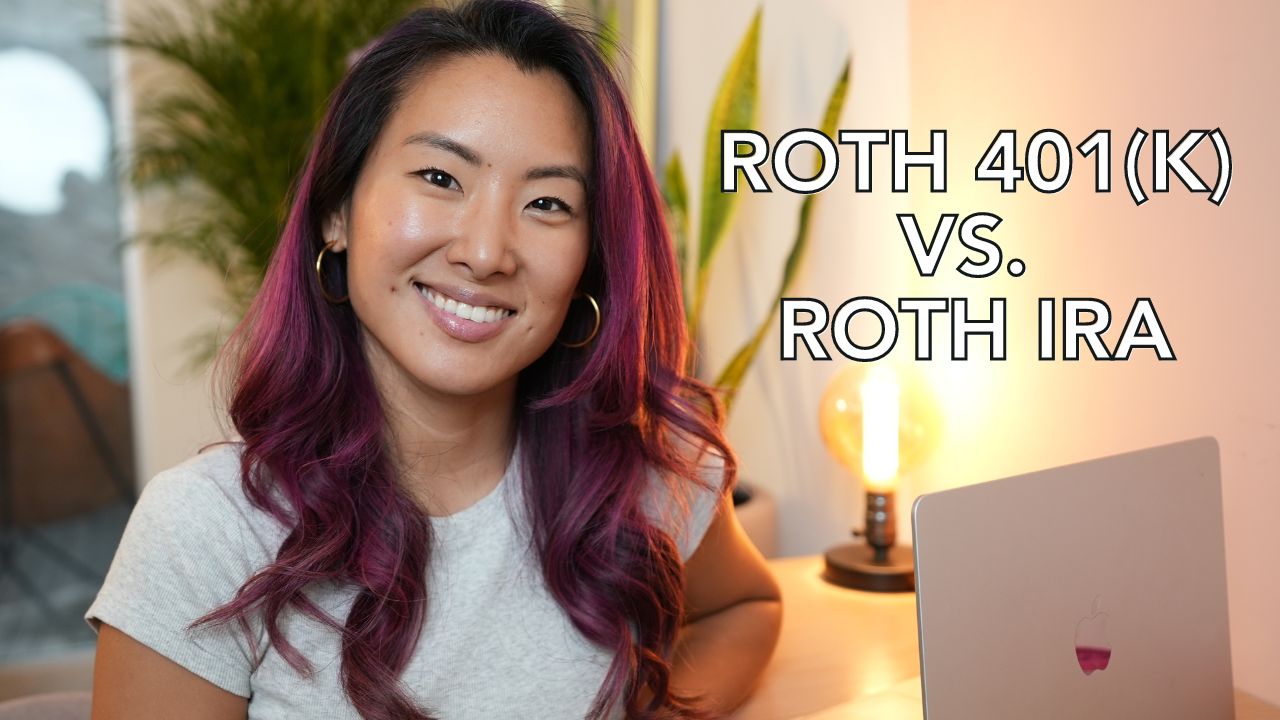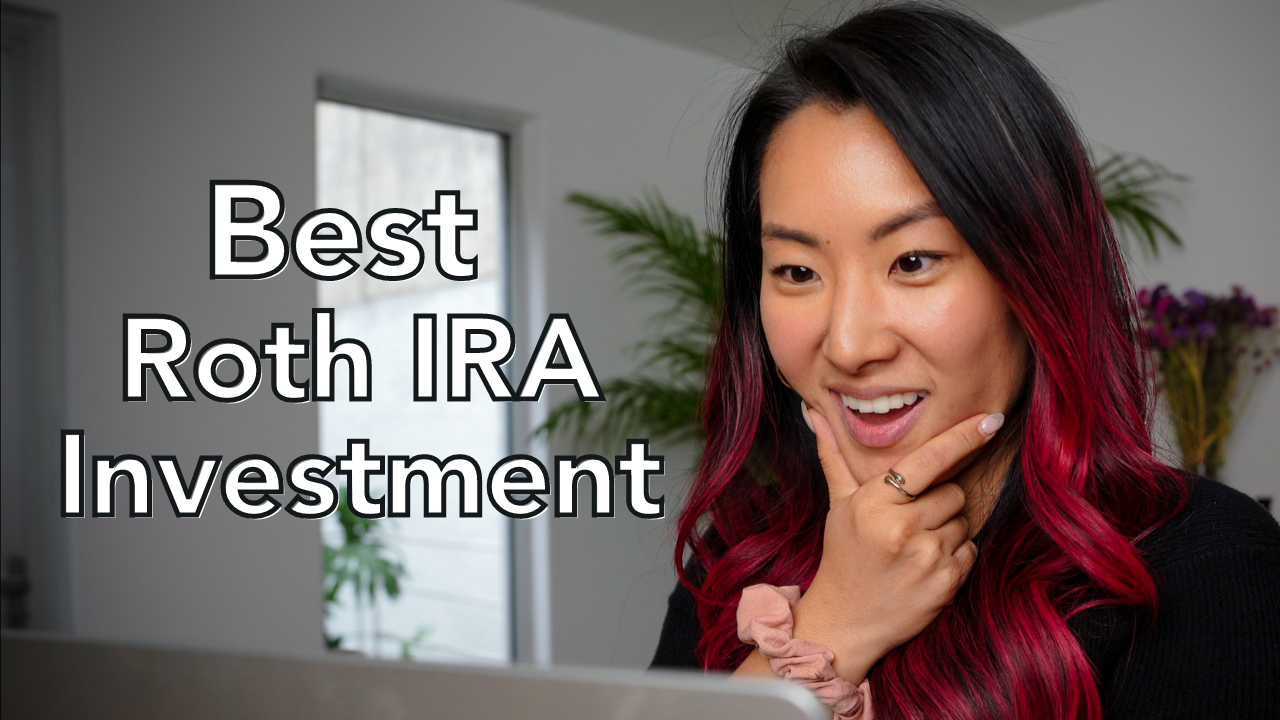There’s a reason why Americans have 20% of their retirement assets in target-date funds. That’s because target-date funds are an easy and effective way to invest.
Fidelity target-date funds
What is up everyone? In this blog post, I will be sharing with you the number one place for financial education, empowerment, and inspiration. I’m going to be talking about Fidelity’s target-date funds, also known as Fidelity’s Freedom Funds. You’ll learn the answers to common questions like how does a target date fund work? Are Fidelity target-date funds a good investment? And I’ll also wrap up with some recommendations on whether target-date funds are a good fit for you or not.
In this day and age, nobody is responsible for your retirement but you. Your country, your company, ain’t nobody looking out for you as much as you look out for yourself. And in case you’re not aware, many of you actually already have target-date funds in your 401k by default. So I think it’s important for everyone to understand how target-date funds work.
How do target date funds work?
Target date funds are mutual funds that target a specific date for retirement. Whenever you look up a target-date fund, you’ll see that it has a target retirement year as part of its name. I’m 30 years old right now, so I’m assuming I’m planning to retire around age 65 so I’d go for the 2055 target-date fund, like this one here.
Okay, on a side note, I actually never plan on retiring because I love to work. I love what I do and I’m pretty sure I’ll be making YouTube videos for you until I’m at least 90 years old.
Anyway, so why are target-date funds age-specific? Let’s take a look at an example. The Fidelity Freedom Index 2055 Fund. So here it is. I’ve pulled up the fund summary page for the Fidelity Freedom Index 2055 Fund. Just a couple of things to note here. It has a very low expense ratio of 0.12%, so that’s low and that’s good. The general rule of thumb is anything under 0.2% is considered cheap.
The fidelity freedom index 2055 fund
And now let’s just take a look at what’s inside this fund. So as I said, target-date funds are mutual funds, and you’ll see here that there’s going to be a number of different funds, usually, anywhere from three to five funds inside this mutual fund and they’re going to each give you exposure to a different portion of the market. So this is domestic equities and they also have international equities. Equities are jargon for stocks. They also have exposure to bonds and then exposure to short term debt and net other assets, which essentially means cash.
And what’s interesting here is, so I just want to point out that target-date funds are actually a fund of funds because they are a mutual fund that contains other funds inside it. So that’s something interesting to note. And because it’s a 2055 fund, it’s going to have a pretty aggressive stock allocation. So if you add up the domestic and international stock allocation, that is about, what is that? About 90%. And then bonds and cash make up the other 10% roughly, just rounding up here.
What’s the difference between 2025 funds and 2055 funds?
And if we go over to the 2025 fund, which is for someone who would be retiring in the next couple of years, so they would probably be in their sixties then they would be looking at something more like this, the Fidelity Freedom Index, 2025 Fund. And it has a lot of the same characteristics. The expense ratio is the same, it’s just the target retirement year is different. And what’s interesting is that of course, their allocation is slightly different. Again, it’s going to be a fund of funds, it has multiple different funds in it, but the percentage allocations between stocks and bonds is very different.
So domestic and international stocks add up to about 60% and then the rest of the 40% is in bonds and cash. So as you can see, the 2025 fund has a 60 to 40 stock-bond allocation, whereas the 2055 fund, remember, has a 90 stock, 10 bond allocations. So 90% stocks, 10% bonds.
The 2055 fund for the 30-year-old has a bigger chunk allocated to stocks, whereas the 2025 fund, in other words, the fund for the 60-year-old, has a lot less in stocks and more in bonds and cash. That’s because stocks are more volatile. Stocks are pieces of ownership in companies. If the company can sell its products, keep expenses down and make a good profit, the stock price is going to go up to reflect that success, but that is all based on a very uncertain future and all kinds of assumptions and expectations, so there’s really no guarantees.
However, on the other hand, uncertainty is exactly what causes the huge potential for growth in stocks. If you didn’t have uncertainty, you wouldn’t have growth either. So stocks have more volatility, uncertainty, and more growth. However, a 90-year-old granny doesn’t want uncertainty. She can’t afford that. She needs stability and that’s why the older you are, the less your target-date fund will be allocated to stocks and the more it’ll have in bonds instead. Bonds are more stable than stocks because bonds are essentially loans. They’re contractual and when you own a bond, somebody actually has a legal obligation to pay you back. So compared to stocks, they’re a lot more reliable, but you’re also not going to get very high returns. You already know what your return is going to be when you go in, in other words, what interest rate you’re going to get, and that’s that. There’s no growth beyond that. Of course, that’s assuming you’re going to hold the bond to maturity, but that’s a conversation for another day.
I’m covering a lot of information here, so I want to just check in with you really quick with a fun challenge. Now, if you were to invest in a target-date fund, what would be your target retirement year? In other words, what would the number at the end of the target date fund that you buy, what would that number be? So do the calculation just really quick, figure out your year and just type it in the comments below. For me, it’s 2055, for some of you it might be 2065 and everything in between. So whatever your year is, just drop it below in the comments.
Okay, in addition to automatically adjusting your portfolio as you get older, the target date fund also rebalances it. What this means is that as the market value of your investment shifts, the target date fund is going to buy and sell the stocks and bonds in your portfolio in order to maintain those initial percentage allocations. So for example, when the stock prices go up a lot relative to bond prices, then the target date fund is going to sell some stocks and buy more bonds in order to stay at the 90% stock, 10% bond allocation or whichever allocation you’ve started with.
Because the markets are always moving, the pie chart that I showed you earlier, that’s always going to shift depending on how the market is moving and so the fund needs to proactively buy and sell constantly in order to maintain that pie chart. What rebalancing forces you to do is to sell something after the price has gone up and to buy more of something after it’s gone down. And this results in automatically selling high and buying low and that juices your returns even more. So rebalancing is a big part of longterm investing success. And with target-date funds, they do rebalancing for you automatically.
The thing about investing is that unless you pay someone to do it for you, you’ve got to really roll up your sleeves and do some work. Not only do you have to pick the asset allocation, but you also have to choose the index funds and you have to rebalance it regularly and of course remember to adjust the allocations to get more and more conservative as the years go by. But with a target-date fund, all of this gets done for you. The way I see it, if you want everything to be done for you, you only have three options.
Which option is best for you?
The first option, buy a target-date fund and pay the fund’s management fee. The second option is you can pay a financial advisor and pay their 2% annual fee. Or the third option is you can pay a Robo-advisor and Robo-advisors have a 0.25% fee, usually. Even Fidelity, they have their own in house Robo-advisor platform, I think it’s called Fidelity Go and they charge I believe 0.3%. So anyway Robo-advisors they all charge similar fees across the board.
So of all three options, target-date funds are the cheapest way to go and compared to target-date funds of other companies, Fidelity target-date funds offer the lowest expense ratios that I’ve seen anywhere. That’s compared to Vanguard and Schwab and some of the other big names.
Fidelity’s lowest-cost target date fund charges 0.12%, which is less than half the fee of the typical Robo-advisor. So that means that for a $10,000 investment, you’ll only pay $12 in fees. Compare that to $25 for a Robo-advisor, which is almost double. And something else you need to keep in mind is that Robo-advisors invest your money in ETFs or exchange-traded funds, and those exchange-traded funds also have a fee. So you’re paying the Robo-advisor fee as well as the underlying fees of the ETFs that you’re invested in. So this usually results in a total fee of about 0.4%, which is 0.28% more than a Fidelity target-date fund. That doesn’t sound like a huge difference, but compounded over time, a small difference like that in fees adds up to tens of thousands of dollars. Don’t believe me, check this out.
So here’s what happens when you invest $10,000 back in 1970, so this is over almost a 40 year period. And the red line represents if you invested with a theoretical Robo-advisor that charges 0.4% all-in costs, including the underlying ETF fees. And then the blue line represents the fees or the returns of if you’d invested in a target-date fund that returns 0.12%. And of course, we’re assuming that they both returned the same amounts, they’ve invested in the same indexes. But at the end of that period, the Robo-advisor you’ll have $10,000 will have turned into $280,000 and with the target date fund, your $10,000 would have turned into $320,000. So that’s a $40,000 difference just from a tiny 0.28% difference in fees. So the bottom line is fees matter, every percentage point counts.
Moving right along. By now, you’re probably wondering, “Are Fidelity target-date funds a good investment? Am I going to make money?” Well, let’s see.
So here’s a chart comparing the performance of the Fidelity Freedom Index 2055 Fund, so the target date fund for someone who’s about 30 years old right now. I’m comparing that to two things. So this is the blue line here, the target date fund, and the yellow line here is the international stock market. And the purple line here is the US stock market.
So as you can see, ever since about 2011, which is how far I could get the data to go back, the target date fund has definitely lagged the US stock market, in other words, the S&P 500. But it’s outperformed the international stock market. So it’s been somewhere in the middle. So you’re probably thinking, “Well, why would I invest in a target-date fund when I could have invested in the S&P 500, just 100% stocks, and made that much more versus just 67%?” So that is kind of the tricky part here. You actually never know when US stock markets will outperform the international stock markets. It just so happened that over the last decade, the US stock market has been on a really, really, really hot streak compared to the rest of the world. But there have been periods when it’s been the other way around where this yellow line would be way up there and this purple line would be way down here, such as in the 1970s the 1980s or in the early 2000s right after the dot-com bubble. Then anyone who was in international stocks was a happy camper.
The benefit of target-date funds
So that is sort of the benefit of target-date funds that even though it doesn’t look so good over the last decade, in the future, you might be glad that you’re here in the middle versus somewhere down here. And remember that the target date fund has a 90% stock allocation and about a third of that stock allocation is in international stocks. So that I would say is the first benefit of being in a target-date fund. Even though it doesn’t look so good, you actually just never know when domestic stocks will be doing better than international. So that is the first benefit.
The second benefit of investing in target-date funds is that during a really crazy time in the market, like the 2008 financial crisis, you wouldn’t lose as much as someone who had invested in a 100% stock portfolio.
So this chart here compares 2008, that crazy time, for someone who had a 100% stock portfolio in the S&P 500 index fund, so that’s this yellow line here. And the blue line represents what would have happened in 2008 for someone who had their money in a target-date fund. I actually put in the target date of a Vanguard 2015 fund because Fidelity doesn’t have data going that far back. And this is someone who was probably getting ready to retire soon and really cannot afford big losses in the stock market.
So someone who was in the target date fund would have lost 39% just from the high to the low, and anyone who was invested in a 100% stock portfolio in the S&P 500 would have gone down 56% from high to low. So that’s a pretty tough psychological hit to overcome. 56% loss compared to a 39% loss. I mean 39% still sucks, but it’s a lot better than losing 56%. Obviously, all of these numbers recovered later on and we’re way up here now, but still, I mean if you’re getting ready to retire in seven years if it was back in 2008, would you be able to sleep at night if your portfolio took a drawdown of 56%? I think 39% would have been a lot easier to stomach.
So that is the second benefit of target-date funds, which is that because it’s diversified into bonds and they automatically move you to a more conservative allocation as you approach retirement age, any sort of market crash, which let’s be honest, could happen at any time, is not going to affect you as much.
If you owned a target date fund during the 2008 financial crisis versus an S&P 500 index fund, it would have been much easier to survive that recession psychologically, emotionally, and financially. So although the potential returns of investing in a fidelity target date fund probably won’t be as high as if you put 100% of your money in a super aggressive 100% stock fund, at least you’ll be able to sleep at night and you’ll experience a smoother ride during recessions. And with target-date funds, you’ll still collect a respectable seven to 8% return.
If you’re considering investing in Fidelity target-date funds, then definitely sign up for my free crash course, Get Started Investing: How To Build a Starter Stock Portfolio in Just Three Days. You can take action on this course with just $100 and I know the Fidelity website can be a little hard to navigate, so I’ve also included step-by-step tutorials so you can just have two tabs open and follow along with me on the screen to set up your very first target-date fund investment.
There’s also a bonus cheat sheet in that course with links to all of Fidelity’s best target-date funds. So I’ve made it super easy for you and it’s specially made for beginners who need a lot of handholding. So click here to sign up. It’s free!
IN SUMMARY
In my opinion, the number one hurdle to getting invested is getting over that analysis paralysis. I know there’s an overwhelming amount of decisions to make just to get started, so most people end up not making a decision at all. What platform do I use? What account do I open? And then once you even get past all of that, it’s like how much money do I invest and then what do I invest in? So the thing about target-date funds is that it completely eliminates this analysis paralysis. They make most of the decisions for you. All you have to do is open your account at Fidelity and pick the year that you are retiring. Everything else will be taken care of for you.
So if you’ve been wanting to put your money to work but for one reason or another you’ve just never gotten around to it, then I do think in a Fidelity target-date fund is a great place to start. So that’s it for this video. I hope it’s been really helpful for you.
Always remember to go after your dreams unapologetically, and to live life on your terms – cheers!






